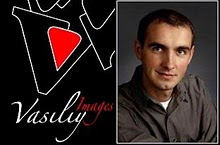I often get asked why I charge for copyright when other photographers in this region don't. My response to that is simply this.... wanna guess?.... No! It's not to make my client's life more difficult. It's
because I want to stay in business!
By charging for the "right to copy" intellectual property a photographer (or any other creative) is able to sustain his/her craft as well as
remain competitive against those who give their copyright away for free. As well as remain competitive against those who do charge for the right to copy. However, more importantly I do so because I would like to continue working as a photographer. If I surrender my copyright then I'm at a disadvantage. Besides, why give something away for free that is protected under the United States copyright law?
When I lost my first bid for a project because of the “terms and use”
I was pretty upset with myself. And recently that happened again and it didn't phase me at all. Because more often then not, the client and I are able to sit down re-negotiate the “terms and use” and
successfully complete the project.I realize the value that photography (not just mine) brings to any project and that's why one can't (and shouldn't) just deliver the images to a client and let the images go without any preconditions. Why? Because what ends up happening most of the time is that the image(s) end up doing a lot of
work for the client for many years while the photographer doesn't.

Photographers who chose not to control their copyright are hurting them selves as well as the photography industry through bad business practice. Consider what happens when a photographer retires, or can't shoot any more, but his/her images are still being used with out generating them income?
Controlling the copyright is the backbone of any successful photography business... like Vasiliy Images. What value does this bring to the client?
This brings a huge value to Vasiliy Images clients. If I'm a photographer who controls and depends on the income generated through copyright, then I'm more motivated to produce images that have a longer shelf life and have a broader appeal to the client. More so then lets say images created by a photographer who seek to get paid only once for the life of his/her work.
As a photographer, the better images I can create, the higher my chances are of re-licensing my work after the term is up, or even licensing the work to a third party.

For example, over a year ago I shot a re-dedication ceremony for a client and during that time we created some really nice images that can never be recreated again. The event included fireworks over the campus, huge event tents on the back lawn, alumni reunion from about 40 years ago, elected officials, ribbon cutting, students from other countries, architectural shots of the building that was renovated and rededicated and so on...) these
images hold great historical significance and value to the client and to me. If I just gave my copyright away I would probably never see another penny for my hard work. However, now once the two years are up the client is interested in re-licensing some of the images. With this, I'll be able to continue with my craft because two years later the images are still generating me income. While the photographer who sold his/her work as a commodity
will be out of work. Why? Because that client will not have another rededication ceremony after those two years or ever again of such proportion or historic significance.
 This further benefits my clients and my relationship
This further benefits my clients and my relationship with them because lets say in that two year time as my equipment ages and starts to break down I'll be able to update or repair my gear and grow Vasiliy Images. This will in tern allow us to perpetuate our relationship with the client and
deliver even better images and quality work as never before.
 But yeah, Vasiliy Images now has a Twitter account. Now you can become one of our followers and get updates when ever this blog is updated, or when my SportsShooter.com account is updated, or anything else that interesting happens. I haven't figured out for what and how we'll use Twitter.... but we'll learn and figure something out as we go along.
But yeah, Vasiliy Images now has a Twitter account. Now you can become one of our followers and get updates when ever this blog is updated, or when my SportsShooter.com account is updated, or anything else that interesting happens. I haven't figured out for what and how we'll use Twitter.... but we'll learn and figure something out as we go along.


















































